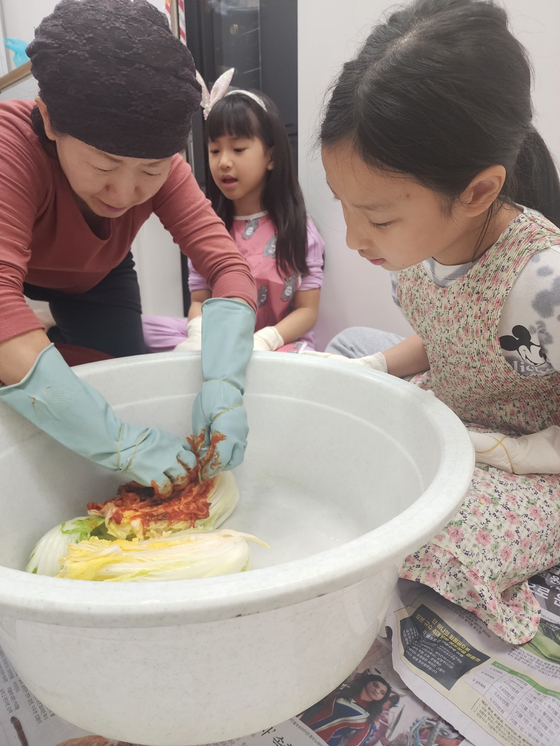November Joy [Photo Essay Contest]

The Korea JoongAng Daily hosted its first photo essay contest for elementary, middle and high school students on the theme: “Promote the beauty of Korea to foreign countries." The contest ran from October to November. Photos containing scenes of traditional culture, family love, places to see and tasty treats in Korea were submitted for the contest.
Seohyun Jun from Mountain Cherry Academy won the silver prize in the elementary school category for this photo essay.
In November, the Kimjang season begins in Korea, and it’s a big deal for my family every year around this time. It happened just last week when Grandma showed up with lots of fresh veggies. As I watched Mom and Grandma get ready for Kimjang, my sister and I were super excited. We were happy to join in on this November family fun, except our little brother had to stay upstairs with Dad. Or he'd be like a bull in a china shop, making a mess during Kimjang. We quickly put on our aprons and gloves, and that’s when the fun started.
Grandma brought two reddish-brown huge rubber buckets (they call them "Darai," which I thought sounded funny), napa cabbages, scallions, sliced onions, diced garlic, and ginger, along with the spicy chili paste all mixed together in another big bucket. Those buckets were so big that I thought I could take a bath in them! We spread and patted the chili paste between the leaves of the salted cabbages until I was tired. It seemed like a lot of work at first, but once it was done, it felt so good.
“Time to celebrate!" Mom suddenly yelled just as I was about to leave the kitchen. She came with a plate of boiled pork, also known as Bossam, alongside the kimchi we made. She said Bossam and Kimjang kimchi make the best combination. It was spicy but yummy enough to make my little brother's sadness go away. The rest of the kimchi will be kept in a container inside a special fridge until it's ready to eat. Grandma explained that patience is the secret ingredient that makes kimchi even tastier. “Why so much, though? There are only five of us in the family," my younger sister said. Then Mom told us we made enough to last through the winter and to share with our aunts and uncles. Mom said Kimjang also means sharing and caring. I was sure that's what makes our Kimjang culture beautiful.
Kimjang is a special Korean tradition where families and neighbors come together to make and share kimchi, a delicious fermented food with salted veggies and tasty seasonings. (Since it’s fermented, it’s good for your body, just like healthy yogurt.) Long ago, Koreans made lots of kimchi in the late fall to have enough for the winter. It's cool because everyone helps out. According to UNESCO, Kimjang was listed as an intangible cultural heritage of humanity in 2013, which makes me very proud as a Korean.
November is one of the best times to visit Korea. You can enjoy the beautiful autumn colors and be part of this extraordinary seasonal activity to fully experience our culture. I believe Kimjang is a true beauty of our culture that foreigners can’t miss. It’s especially great for kids and anyone who loves cooking.
• “Kimjang, making and sharing Kimchi in the Republic of Korea.” www.ich.unesco.org, Cultural Heritage Administration, Republic of Korea, 2013
By Seohyun Jun, Mountain Cherry Academy










with the Korea JoongAng Daily
To write comments, please log in to one of the accounts.
Standards Board Policy (0/250자)